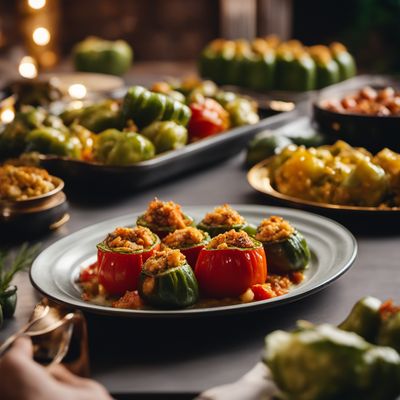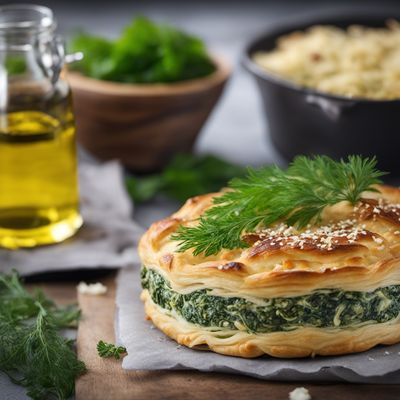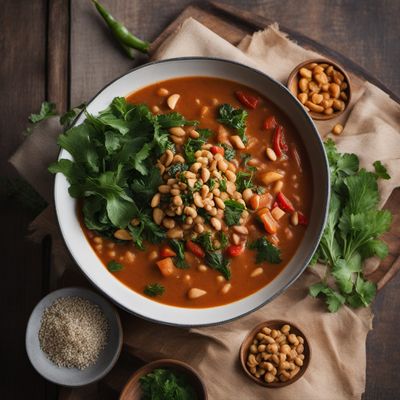
Recipe
Zambian-style Koliva
Millet and Peanut Koliva: A Zambian Twist on a Greek Tradition
4.6 out of 5
Zambian-style Koliva is a unique adaptation of the traditional Greek dish. This recipe combines the nutty flavors of millet and peanuts with the sweetness of dried fruits and the warmth of cinnamon. It is a delightful and nutritious dish that holds cultural significance in Zambian cuisine.
Metadata
Preparation time
30 minutes
Cooking time
20 minutes
Total time
50 minutes
Yields
6 servings
Preparation difficulty
Easy
Suitable for
Vegan, Vegetarian, Gluten-free, Dairy-free, Nut-free
Allergens
Peanuts, Sesame seeds, Coconut
Not suitable for
Paleo, Keto, Low-carb, High-protein, Atkins
Ingredients
Zambian-style Koliva differs from the original Greek version in several ways. Firstly, the use of millet instead of wheat berries gives the dish a unique texture and flavor. Additionally, peanuts are added to the recipe, providing a nutty taste that is characteristic of Zambian cuisine. The choice of dried fruits may also vary, with Zambian versions often including local favorites such as dried mangoes or raisins. Finally, the garnishes used in Zambian-style Koliva, such as coconut flakes and sesame seeds, add an extra layer of flavor and visual appeal. We alse have the original recipe for Koliva, so you can check it out.
-
1 cup (180g) millet 1 cup (180g) millet
-
1 cup (240ml) water 1 cup (240ml) water
-
1 cup (150g) peanuts, roasted and chopped 1 cup (150g) peanuts, roasted and chopped
-
1/2 cup (75g) dried mangoes, chopped 1/2 cup (75g) dried mangoes, chopped
-
1/2 cup (75g) raisins 1/2 cup (75g) raisins
-
1/4 cup (30g) coconut flakes 1/4 cup (30g) coconut flakes
-
2 tablespoons sesame seeds 2 tablespoons sesame seeds
-
1 teaspoon ground cinnamon 1 teaspoon ground cinnamon
-
1/4 cup (60ml) honey 1/4 cup (60ml) honey
-
1/4 cup (60ml) orange juice 1/4 cup (60ml) orange juice
-
1 tablespoon lemon zest 1 tablespoon lemon zest
-
Fresh mint leaves, for garnish Fresh mint leaves, for garnish
Nutrition
- Calories (kcal / KJ): 320 kcal / 1340 KJ
- Fat (total, saturated): 12g, 3g
- Carbohydrates (total, sugars): 47g, 18g
- Protein: 9g
- Fiber: 6g
- Salt: 0.02g
Preparation
-
1.Rinse the millet under cold water and drain.
-
2.In a saucepan, combine the millet and water. Bring to a boil, then reduce heat to low, cover, and simmer for 20 minutes or until the millet is tender and the water is absorbed.
-
3.In a large mixing bowl, combine the cooked millet, chopped peanuts, dried mangoes, raisins, coconut flakes, sesame seeds, ground cinnamon, honey, orange juice, and lemon zest. Mix well to combine all the ingredients.
-
4.Transfer the mixture to a serving dish and smooth the top with a spoon.
-
5.Garnish with fresh mint leaves.
-
6.Serve at room temperature or chilled.
Treat your ingredients with care...
- Millet — Rinse the millet thoroughly before cooking to remove any impurities.
- Peanuts — Use roasted peanuts for a richer flavor. You can also chop them finely or leave them slightly chunky, depending on your preference.
- Dried mangoes — If you can't find dried mangoes, you can substitute them with dried apricots or pineapple for a similar tropical flavor.
- Coconut flakes — Toast the coconut flakes in a dry pan over medium heat until golden brown for an extra burst of flavor.
- Sesame seeds — Lightly toast the sesame seeds in a dry pan over low heat until fragrant to enhance their nutty taste.
Tips & Tricks
- For added richness, you can drizzle some melted dark chocolate over the top of the dish before serving.
- Experiment with different dried fruits such as dates or figs to customize the flavor profile.
- Adjust the sweetness by adding more or less honey according to your taste preferences.
- If you prefer a smoother texture, you can blend a portion of the mixture in a food processor before combining it with the rest.
- Serve Zambian-style Koliva in individual bowls or as a communal dish for a festive and communal dining experience.
Serving advice
Zambian-style Koliva is traditionally served as a dessert or a sweet snack. It can be enjoyed on its own or paired with a cup of hot tea or coffee. Serve it in small bowls or plates, garnished with fresh mint leaves for an elegant touch.
Presentation advice
To enhance the presentation of Zambian-style Koliva, sprinkle some extra coconut flakes and sesame seeds on top. You can also arrange a few dried mango slices or raisins on the surface for an eye-catching display. Serve the dish on a decorative platter or individual dessert plates for an appealing presentation.
More recipes...
For Greek cuisine » Browse all
More Greek cuisine dishes » Browse all

Amygdalotá
Amygdalota
Amygdalotá is a traditional Greek almond cookie that is often served during the Christmas season. These cookies are known for their soft, chewy...

Dous makos
Walnut Pie
Dous makos is a traditional Haitian dessert made with sweetened coconut and condensed milk. It is a popular treat during holidays and celebrations.

Yemista
Stuffed Vegetables
Yemista is a Greek dish made from stuffed vegetables.
More Zambian cuisine dishes » Browse all

Tongabezi Chicken Curry
Chicken curry
Tongabezi Chicken Curry is a spicy and flavorful dish that originates from Zambia. It is made with chicken, coconut milk, and a blend of spices...

Chikanda
African Polony
Chikanda is a traditional Zambian dish that is made with ground peanuts and vegetables. It is a flavorful and filling dish that is perfect for a...

Ndiwo
Vegetable Stew
Ndiwo is a traditional Malawian dish made with leafy greens and peanuts.








